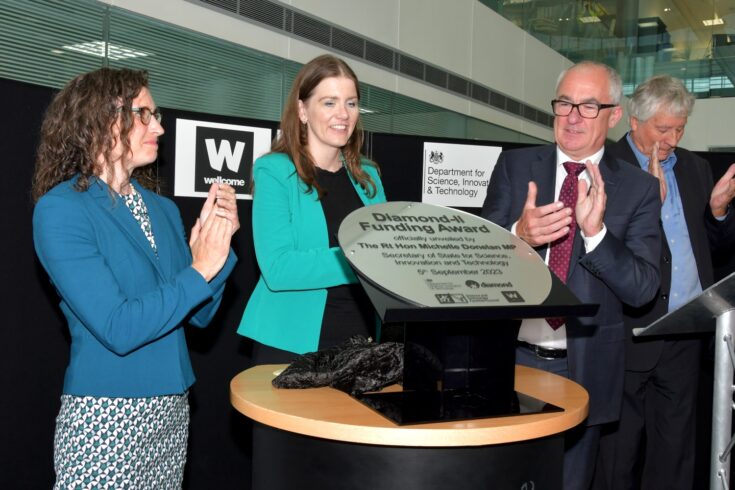Diamond-II is a £519 million investment by government, predominantly from the UK Research and Innovation (UKRI) Infrastructure Fund and the Wellcome Trust.
The investment will be used to upgrade and expand the Diamond Light Source (Diamond) synchrotron facility based at the Science and Technology Facilities Council (STFC) Rutherford Appleton Laboratory.
A brighter synchrotron machine
It will involve construction of a new, even brighter synchrotron machine, which is essentially a giant microscope, producing light 10 billion times brighter than the sun.
The construction is expected to be completed in 2030.
This giant microscope enables scientists to study anything from fossils to jet engines to viruses and vaccines in incredible detail.
Pioneering scientific facilities
Science, Innovation and Technology Secretary, Michelle Donelan, said:
Our national synchrotron may fly under the radar as we go about our daily lives, but it has been crucial to some of the most defining discoveries in recent history – from kickstarting Covid drug development that allowed us to protect millions to advancing treatment for HIV.
Our investment will ensure one of the most pioneering scientific facilities in the world continues to advance discoveries that transform our health and prosperity, while creating jobs, growing the UK economy and ensuring our country remains a scientific powerhouse.
Benefiting the scientific community
The official visit to launch Diamond-II was attended by:
- Professor Sir Adrian Smith, Chair of Diamond
- Professor Mark Thomson, STFC Executive Chair
- Dr Beth Thompson, Chief Strategy Officer at Wellcome
There were also members from the research and innovation community at the launch.
Impact on diverse scientific fields
As part of a speech to Diamond staff during the visit, Michelle Donelan highlighted the wide-reaching impact that Diamond-II will likely have on diverse scientific fields including:
- pharmaceutical development building on the contribution Diamond made to COVID-19 vaccination research
- physical sciences including the discovery of new materials for the renewable industry
- technological development for various industries including sustainable tech for the net zero agenda
Diamond-II is also expected to support the facility’s already considerable contribution to the UK economy.
Since operations began in 2007, the economic and social impact of Diamond is estimated to be worth at least £2.6 billion, showing a significant return on the £1.4 billion public investment to date.
Globally competitive science
Executive Chair of STFC and UKRI Champion for Infrastructure, Professor Mark Thomson, said:
The UK is home to incredibly talented researchers, but this alone is not sufficient to stay at the forefront of globally competitive science.
It is essential that we also invest in world-class research infrastructure programmes that provide our researchers with the necessary tools to work at the cutting edge.
This investment in Diamond-II will play a crucial role in cementing the UK’s place as a Science Superpower and provide our talented researchers and innovators with the best opportunities to make major breakthroughs across a wide range of disciplines from structural biology to advance materials and battery technologies.
Find out more about Diamond and the Diamond-II programme on the Diamond Light Source website.

